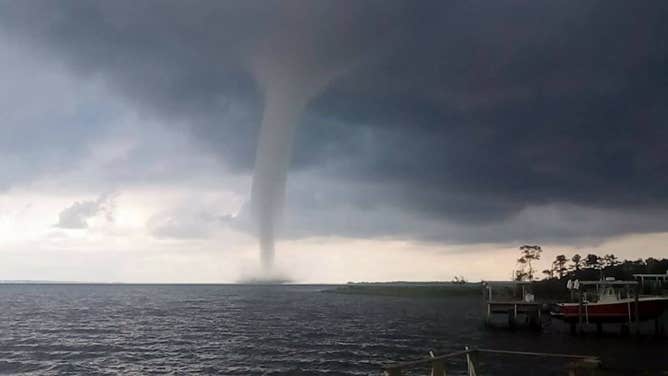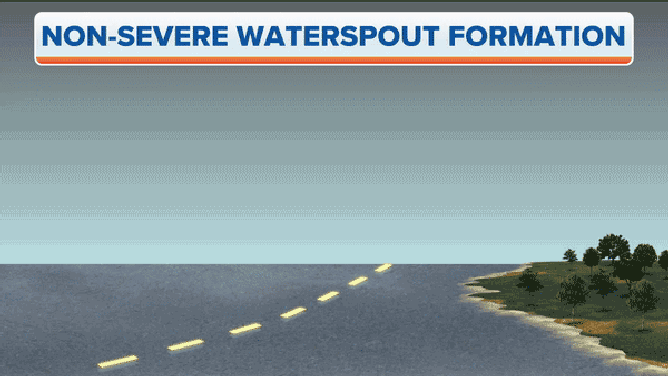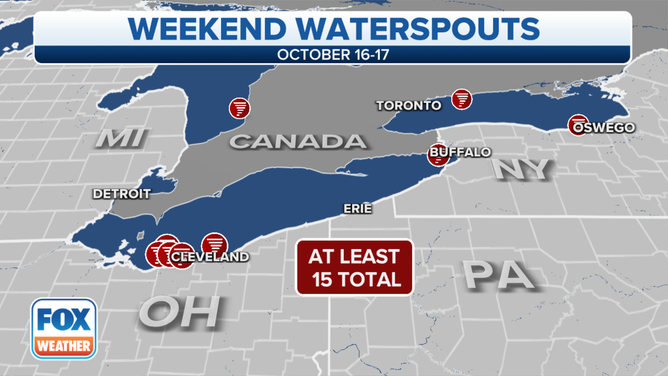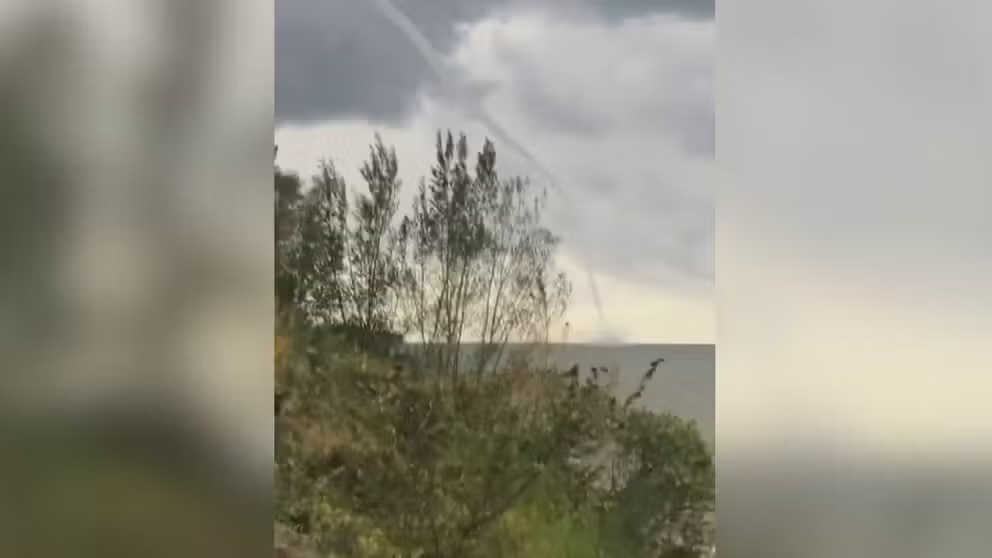What is a waterspout?
Waterspouts come in a couple of different types: tornadic and fair weather
Ohio rope-like waterspout twirls over Lake Erie
Ohio rope-like waterspout twirls over Lake Erie.
Anyone who has spent time in the Great Lakes region will tell you the lakes strongly influence local weather patterns, and waterspouts are arguably the most fascinating type of weather produced by these large bodies of water.
A waterspout is a "funnel which contains an intense vortex, sometimes destructive, of small horizontal extent and which occurs over a body of water," according to Dr. Joseph Golden, a distinguished waterspout authority at NOAA.
While many believe a waterspout is simply a tornado over water, this is only partially true. Depending on their formation, NOAA says waterspouts come in a couple of different types: tornadic and fair weather.

Several waterspouts were reported in the Kill Devil Hills/Kitty Hawk area of North Carolina's Outer Banks during the late-morning hours of July 10, 2017. One of these waterspouts moved onshore, producing some minor wind damage.
(Brad Dills via NWS Newport/Morehead City, North Carolina)
A tornadic waterspout typically begins as a true tornado that was spawned by a thunderstorm over land, which then moves out over the water and becomes a waterspout. Tornadic waterspouts may be quite large and can cause considerable damage to anything in their path.
The more common type, a fair-weather waterspout, is one that develops over open water. Fair-weather waterspouts form at the surface of the water and rise upward in association with warm water and high humidity in the lower portion of the atmosphere. This type of waterspout is generally small, brief and less dangerous than a tornadic waterspout.
According to the National Weather Service, waterspouts occur most frequently in the Great Lakes from August through October, when water temperatures are near their warmest levels of the year.
"Waterspout formation typically occurs when cold air moves across the Great Lakes and results in large temperature differences between the warm water and the overriding cold air," the NWS said. "They tend to last from about 2 to 20 minutes and move along at speeds of 10 to 15 knots (about 12 to 17 mph)."
Golden distinguishes five stages of waterspout formation:
- Dark spot: A prominent circular, light-colored disk appears on the surface of the water, surrounded by a larger dark area of indeterminate shape and with diffused edges.
- Spiral pattern: A pattern of light- and dark-colored surface bands spirals out from the dark spot that developed on the water surface.
- Spray ring: A dense swirling ring of sea spray, called a cascade, appears around the dark spot with what appears to be an eye similar to that seen in hurricanes.
- Mature vortex: The waterspout, now visible from the water surface to the overhead cloud mass, achieves maximum organization and intensity. Its funnel often appears hollow, with a surrounding shell of turbulent condensate. The spray vortex can rise to a height of several hundred feet or more and often creates a visible wake and an associated wave train as it moves.
- Decay: The funnel and spray vortex begin to dissipate as the inflow of warm air into the vortex weakens.

The formation of a fair-weather waterspout.
(FOX Weather)
An outbreak of fair-weather waterspouts occurred during the weekend of Oct. 16-17, 2021, in the Great Lakes.
The International Centre for Waterspout Research confirmed at least 15 waterspouts on lakes Huron, Erie and Ontario over the two days. Nearly 1,200 waterspouts had been tallied globally in 2021 through mid-October, according to the ICWR.

At least 15 waterspouts were confirmed in an Oct. 16-17, 2021, outbreak in the Great Lakes.
(FOX Weather)
Waterspouts are also somewhat common off the Florida coastlines, and have been known to swirl off the Pacific Coast on occasion, such as this waterspout that spun off the Oregon coast in 2024.
All waterspouts should be taken seriously, no matter the type. The NWS issues Special Marine Warnings when waterspouts have been detected by Doppler radar or are reported by local law enforcement or storm spotters.
In most cases, waterspouts that make landfall are significantly weaker than tornadoes, produce little or no damage and quickly dissipate. The NWS issues Tornado Warnings in these instances.
If you are a boater or a person living along the coast of the Great Lakes, you should be aware of the destructive potential of waterspouts. When the NWS issues a warning for a waterspout, be prepared to quickly seek safe harbor and find shelter out of the path of the waterspout.
